Who has the highest elevation/most desert sited pawpaw?
Every so often I post a question to see where folks have had luck with this favorite fruit of mine. I tried two plants and numerous seeds here just below 7,000 feet elevation, in my arid climate (average around 14 inches annual precipitation). The plants did OK the first year, but I noticed that during times of low humidity they suffered. The second year was bone dry and they died.
It seems as though in general plants are able to adapt to high elevation, intense sunshine, and low humidity if they have appropriate siting and ample water. That's why people in Phoenix are able to grow plants native to tropical rainforest. So I wonder, is pawpaw an exception? Or should I try again, perhaps with more protection and providing additional humidity somehow?
I'd love to hear your ideas...
Comments (42)
Ivywild142
11 years agoI am growing pawpaws in Colorado Springs, CO . I am at 6,000ft almost exactly. They seem to do well here in more shade than sun. Mine can get sunburn at times. They bloom and fruit well in partial sun.
I have NC-1, Wells, Taytoo and some unknown parentage.fabaceae_native
Original Author11 years agoThank you Ivywild! You're the first one I've heard of growing pawpaw in the high dry west. And I've been wondering this for years!
Anyway, you've just given me the confidence I need to try growing pawpaw again. I've been to CO Springs many times, and know that where I am is a bit more arid and slightly more moderate in terms of temps, but definitely a similar climate.
A couple of questions: by any chance did you get your plants locally, or have to order them? How do they deal with the sometimes windy conditions you have there? Do you find their water needs to be all that different from other plants you grow?
Thanks again, I'm just ecstatic about this news...
Related Professionals
New Mexico Landscape Architects & Landscape Designers · Palm Springs Landscape Architects & Landscape Designers · Belmont Landscape Contractors · Berkeley Heights Landscape Contractors · Cerritos Landscape Contractors · Fort Worth Landscape Contractors · Gresham Landscape Contractors · Hawthorne Landscape Contractors · Madera Landscape Contractors · Mount Sinai Landscape Contractors · San Antonio Landscape Contractors · Shoreview Landscape Contractors · Tamarac Landscape Contractors · Waipahu Landscape Contractors · Gulf Gate Estates Tree Servicesmilehighgirl
11 years agofabaceae_native,
I purchased two from One Green World about three years ago. I kept them in pots thinking they needed to be babied when they were young. I did not water them much one winter and one did not make it through. The other has grown quite a bit and I plan to plant it now.
I agree with vywild142 regarding the shade issue. I plan to plant mine where it will get partial shade from my maple tree. Here in Denver they got sunburned too easily but did well in the shade. I bought NC-1 and Pennsylvania Golden. Unfortunately I don't know which one survived.
I have an order placed for Shenandoah and Allegheny with Forrest Keeling.
I emailed Neil Peterson with some questions I had and here is his reply to me:
"Zone 5 winters are not difficult for pawpaws to survive. They are hardy down to -25F and are native around Omaha, NE, and in Michigan, both of which have tough winters.
In answer to your specific question: experiments testing cold hardiness have not been done. Scientists cannot say what variety is the hardiest.
Also, remember that there is an issue of the rootstock, which is not clonal, but is always a seedling whose characteristics are unknown.
In Colorado the issues for pawpaws are (1) soil pH, it must be acid, including the subsoil; (2) summer rainfall, you are fairly dry and they need irrigation; (3) at high elevations summer temperature may be too cool to ripen the fruit and harden the wood for winter."
My family comes from Arroyo Hondo and it is quite different there than in other parts of N.M. The two cultivars I selected are supposed to ripen the earliest. I don't know if length of growing season will be too much of a problem for you. I guess that will depend if you are in the mountains or the desert S.W. area.
After I placed my order with F.K. I noticed that One Green World is also selling the Peterson cultivars. I haven't ever had any problems with the orders I have placed with them.
I haven't had any fruit yet, obviously, so I cannot comment on that.
fabaceae_native
Original Author11 years agoThanks milehighgirl!
I'm in the Santa Fe area, but a tad lower in elevation... overall a bit milder than Arroyo Hondo.
Interesting what Peterson had to say about growing them in CO. I don't imagine having any problems with cold hardiness, or ripening/hardening off here since we tend to have a warm enough growing season to please most things (as you certainly also have in Denver).
But the part about acid soil... I always guessed as much, but never read it anywhere. I just hope that good, neutral garden soil is sufficient. If they are true acid-lovers like blueberries, it won't be worth the trouble in my book.
Hopefully the three of us will be around on this forum long enough to compare notes on the pawpaws we are growing, or attempting to grow!
milehighgirl
11 years agofabaceae_native,
I tried to grow blueberries in the same soil I have my pawpaw planted in and they did not do well. The leaves took on a reddish tint and they did not put out much new growth. I ended up trading them for garden seeds with a member on the East coast.
I don't get the impression that they need as much acid in the soil as blueberries do.
Wind may be a concern because the leaves are quite large and the stems seem more pliable (good or bad, I don't know). The branches remind me of peaches more than say, apples. They are quite beautiful. I've spouted avocados and the leaves look similar to me.
This is just my perspective as a newbie to pawpaws. I've never even seen or tasted a pawpaw before!
Bradybb WA-Zone8
11 years agoWhat may also work are real big containers.I've seen them in greenhouses with other trees about thirty feet tall.The pH could be controlled that way.
It depends on how serious a person is and how far they want to go. Bradyfabaceae_native
Original Author11 years agoBrady: you're right about the container idea. It actually would not be any more work, since the pot could stay put outside all the time.
milehighgirl: pawpaws are a real treat! I sometimes order them from Integration Acres, which sends delicious wild harvested fruit from the Ohio Valley. The closest thing to pawpaws available in the markets is definitely Cherimoya, which is a close relative and eaten the same way, with a spoon after getting soft (if you have not tried cherimoya you can find South American as well as California grown cherimoyas at most any Mexican or Asian market, among other places). I'm still confused as to why cherimoyas are widely available, while pawpaws are not, even though the latter are native and can be grown throughout much of North America.
Ivywild142
11 years agoPawpaw do well for me in Colorado Springs. I am in a protected area near the mountains. This helps the pawpaw avoid the worst hail and wind damage we occasionally receive. My soil is near neutral pH and is mostly clay. I add lots of organic matter yearly with plenty of fall leaves which I leave on to decay naturally. I water 1-2 times a week in the growing season. When it is extremely dry or hot I water a bit more. Sometimes a few leaves on the trees get a bit of scorch from sun and dry air but not much. They seem to be happy with the 160 day growing season and the get enough heat or growing degrees to mature fruit and wood perfectly. I can say from observation that they will do well anywhere peaches can grow, and probably a few places too cold for peaches in winter. They have been amazingly easy to grow. Deer do not bother them, and while squirrels have eaten them, they seem to like other fruit much more. I love my pawpaws. They are my most recent favorite fruit to grow. I do hand pollinate them when they bloom. They bloom later than peaches, plums and apples and escape late snows and freezes. In winter, they do not mind widely fluxuating temperatures. Their wood is weaker and more brittle than most fruit trees so I grow mine in between peach trees. This gives them part shade and a little branch support. I have NC-1, Wells, Taytoo, and some unknown trees from Michigan. I also have new trees of Shenandoah and Susquehanna from Forest Keeling. Just ordered several from England's: Kentucky Champ.,Summer Delight, Halvin and Prima 1216 so will have quite a collection. Since they do not need near as much sun as other fruit trees, they can go in more shady locations. I also think they taste very unusual and quite good.
fabaceae_native
Original Author11 years agoThanks again Ivywild!
I guess we were rambling on about some things you already knew from experience, such as the pH question... It was not clear from your first response that you actually had got them to fruit. Now I have a better idea of the scale and success of your pawpaw growing, and it's so great to hear!I also really appreciate the peach comparison, that should be a useful observation for many folks on this forum. Right now I have 6 peach trees which do well here, so I guess I have no excuses about growing pawpaw anymore. To me it's a very worthwhile thing to grow, not only because I love the taste, but also because I can't get fresh pawpaws anywhere within hundreds of miles from here. When I order pawpaws online I pay about $8/pound when all is said and done.
Ivywild142
10 years agoJust want to let all you Front Range Gardeners interested in pawpaws that my 9 pawpaw trees are doing well in my yard and 4 of them have flower buds set for next spring. It appears they are quite pH adaptable, and seem quite happy in my clay based soil. They do grow very slowly in their early years, but have now been picking up the pace. Next year I expect good growth and hopefully some fruit. I have them in sheltered locations in the proximity of other fruit trees. The largest one is over 7 feet tall now and is a 6 year old seedling. All of my others I have planted are named cultivars, including some Peterson varieties. Tried a Susquehanna and Shenandoah fruit this fall. They are really unique, and I thought delicious. Can't wait till mine fruit for me-maybe a year or two away. Anyhow, they can do fine here, it's just a matter of a good site. They really like more shade and the company of other plants in our climate. Very exposed locations in full sun are too stressful for them here. A north or east exposure has worked well for mine in Colo Springs.
Greg
10 years agoI live along the Wasatch front in Utah and planted a NC-1 and a seedling 2 springs ago. When I planted them the NC-1 lost all of its leaves and then grew them back. Later this spring when the 2 trees were coming out of dormancy the NC-1 died at the graft but the seedling grew pretty well this past summer. I planted a third tree to replace the NC-1 and it was also doing fine until my neighbors cats found it. The cats may have finished it off and we will see if the little stick that is left decides to putt out some leaves next spring.
The growing conditions here are as follows. The elevation is 4700 ft and we get about 16 inches of rain a year. The USDA hardiness zone is 6B and last years coldest temp was around -7. The summertime temperatures are usually 90-103 with very low humidity. The soil is calcareous clay and the irrigation water is extremely hard. I was really worried about the fact that my soil was basic but I think they are more adaptable than people give them credit for. This really isn't surprising when you consider that many parts of their native range in Indiana and Kentucky have calcareous soils as well.My seedling pawpaw is in direct sunlight and also receives additional reflected light from the white siding on my house. I didn't shade it at all this summer and it got burned on about half of the southern and western facing leaves. Even with getting some leaf damage it not only survived but managed to grow about 6 inches and put out 4 branches, it isn't a stick any more! It seems to be doing just fine although it is a much slower grower compared to my other fruit trees, but apparently this is normal for the first few years.
I tried my first pawpaws form integration acres this fall and they were a big hit for me and my family. Not to mention they are so unique compared to other fruits I highly recommend people grow them and I can't wait until my trees are producing.
fabaceae_native
Original Author10 years agoWow greg, thanks for reviving this old thread of mine! So there is still hope of growing pawpaw yet.
My climate is nearly identical to yours, at least by the numbers. I'm just below 7,000 feet, also zone 6b, and average 14 inches annually. I'm guessing the differences are the bigger monsoon influence in summer here, as well as the stronger sun at my higher elevation farther south. Seedlings are sounding better and better, and I know they can produce excellent fruit. Only drawback is the longer wait to fruiting.
tucsonken
8 years agoI'm late to the party, but you might be interested to know that I live in Tucson, AZ and have six in-ground pawpaws I started from seeds back in 2012. Four are very healthy and the other two are kind of wimpy; I hope to try grafting a couple of them next year. The tallest is 45" and growing strong.
nmfruit
8 years agoYes, thanks for chiming in tucsonken (This is still fabacaeae_native, I had to create a new profile when this whole houzz thing happened). I am very interested to hear this, and would love to ask some further questions…
-- how did you germinate the seed (in pots inside, in the ground, etc.)?
-- what time of year did the seeds actually germinate for you in your hot summer climate?
-- have you been providing shade and/or other protection for the seedlings, and when if ever do you anticipate being able to abandon this?
-- do the plants ever show signs that they are unhappy with the low humidity alone?
-- when do you expect you to start getting a harvest?
-- do you expect grafting next year will mean an earlier first harvest?
-- do you believe that starting from seed is the best way to go in for challenging climates?
-- do you also grow the close relative, Cherimoya? If so, how does it compare/differ for you?
Obviously, I have still not embarked on another pawpaw trial, but am still very interested. Thanks so much for your input.
nynke_zijlstra
8 years agoThe first years,the paw-paws are sensitive for direct sunlight. When they are 3 feet large, sunlight is no problem anymore. I planted my trees to a low shed on the north-side, and now they are 7 feet high, they get sun all day long.
lucky_p
8 years agoHave a buddy who lives in the mountains outside of Reno NV, whom I sent some pawpaw, persimmon and northern pecan seed to nearly 20 years ago. Last report I had from him were that the pecans and persimmons were doing OK (drip irrigation), but that the pawpaws, while still alive, had constantly struggled - possibly soil pH issues - and that he was considering pulling them out and putting something productive in their spots.
tucsonken
8 years agoNmfruit--The first year I tried germinating the seeds directly in the
ground, and none came up. The person who mailed them to me kindly sent another
batch the following year, and advised me to germinate them before planting. They
looked clean so without washing them, I simply
placed them on a layer of moist Perlite in a clear plastic box, indoors. I didn't
keep records so don't remember how long it took (several weeks) or when I did
it (spring), but each time the tip of a new root appeared I immediately
transfered the seed directly into the soil, usually in a spot that stayed moist
from an existing emitter, with maybe an
inch of cover if I recall correctly. I think I started with about 15 seeds and nearly
all them germinated. It took quite some time before any shoots emerged from the
soil. Most grew pretty well, but over time several failed to thrive and
ultimately died. They're quite variable--my tallest is 45 inches, the shortest (same
age) is about 6 inches (I just leave it there as a curiosity; I don't expect it
to ever amount to anything).There's a pretty favorable microclimate in this part of the
yard; with several good-sized trees, there's more shade than sun over a considerable
area. The soil consequently stays a little cooler, and roots can spread out to reach
irrigated areas under adjacent trees. For years I've dumped kitchen scraps
(green) and other mulch under the trees, so the soil seems pretty good, with a lot
of worms and organic material.I read that pawpaws like to be understory plants, so I
planted most of the seeds under or very near other trees, usually close to the
dripline. In hindsight I probably should have planted more of them in open
areas and simply shaded them temporarily, as now all but two (both planted in
the same hole, a few inches apart) will be crowded. On the other hand, since I protect
most of my fruit trees under a couple of bird netting enclosures, I squeeze them in wherever I can
find a spot, and crowding is the norm. I try to keep things from getting out of
hand by pruning. I have not noticed any sunburn or heat-related stress to the
pawpaws--even last year when the shadecloth blew off the pair out in the open
and they got full summer sun for a few weeks.I haven't noticed any damage or stress due to low humidity,
although a few leaves have been tattered by high winds. I think as long as pawpaws
have access to decent soil and plenty of water, they're pretty adaptable. On
the other hand, mine are the only pawpaw trees I've ever seen, do I don't have
a basis for comparison.I don't know whether grafting will speed up the first
harvest--I'm motivated more by fruit quality. Since seedlings are less
predictable in terms of taste, size, and productivity, it seems wise to hedge
my bets with at least a couple of named varieties that other people agree are
outstanding.Yes, I do think starting from seed is the way to go in
challenging climates, because for very little money you can plant many seeds
and keep the ones that perform best. Even if you later graft onto them, a
healthy, vigorous rootstock is bound to be an advantage. By starting with seeds
I should also think you're much more apt to get a well-developed taproot and avoid
the stresses of a potted plant adjusting to a new location.Yes, I do have a couple of young cherimoyas that were given
to me by my nephew, but they are still in a pot. I think I've identified a spot
against the south side of the house, close to a 1000 gal water tank, where I
think they may stay warm enough to survive Tucson's winters. I will have to rig
up a shadecloth when I plant them--probably next spring. A neighbor had a
couple of seedling cherimoyas growing in a protected patio area for about six
years, but lost them both last winter, so I don't know how good my chances are
for success.bill999
8 years agoI bought a seedling from Miller's or Stark Bros., forget which about 17 years ago and it didn't flower for the first 14 years. It's 9 ft. tall now and I just pollinated it with an artist's brush with pollen from a grove in a public park about 8 miles away. This could finally be the year. I attribute the slow growth to rocky, clay soil in western PA. The tree, however has always looked healthy and prosperous. I always water in the heat of July and August and apply garden fertilizer sometimes in the spring. I can't believe how long this has taken.
nmfruit
8 years agoWow bill999, that's surprising!
Thanks tucsonken for answering all my questions so nicely! There is definitely enough evidence now for possible success with pawpaw here… I'll probably get some seedlings or seed this year to try. Actually not worried anymore about having named varieties, the only ones I've tasted have been from wild trees. Check out post here (persimmonbob maybe) in which fruit from wild tree surpasses that of named varieties every time...
Greg
8 years agoI wonder if there is potential for a pawpaw root stock adapted to alkaline soil? I have noticed from photos that it appears the stems grow quicker for pawpaws in their native habitat versus out west. I started some pawpaws from seed, and with the 6 I have left there is some variability with how fast the stems grow and the leaf spacing. I do fertilize them but it seems like some are just better adapted.
alexander3_gw
8 years agoDon't expect any clonal pawpaw rootstocks any time soon. It's not possible to stool them like pear and apple trees, and cuttings won't make roots. Conceivably it could be done from root suckers, but that would be a very slow and tedious process. KSU is working on it, or at least they were, but I haven't heard anything promising.
Greg
8 years agolast modified: 8 years agoI just wanted to make an update to this thread. I have 3 pawpaws in ground a Wabash, Potomac and a Seedling. The seedling is in its fourth year and it still gets sunburn. The Potomac I planted this spring and it is still a little early to see how healthy it will be. The Wabash on the other hand is growing like a weed. It is in its second year and already the trunk diameter is larger than my seedling, it is just as tall and the leaves never get burned! It is making flower buds so hopefully next year will be the year I get some fruit. I don't know if the increased vigor is due to the root stock but I have a hunch Wabash is better adapted to the environment of the mountain west. Anyone else ever notice this or have any other recommendations for a high altitude semi arid location?
nmfruit
8 years agoInteresting Greg, I hope others will have something to add regarding Wabash! I have not gotten around to trying pawpaw again here, although I did find one planted in a local garden -- unfortunately dead as a doornail, I'm guessing within the first year or two of being planted.
Kevin Olsen
6 years agoI live about 7 miles southwest of Logan, Utah, approx. elevation 4534 in zone 4 in the bottom of the valley. We can be 10-15 degrees colder than Logan. I have an 8 foot extremely healthy self-fertile paw paw seedling purchased from Stark Bros. Nursery years ago that is now growing like a weed. It bore it's first fruit last year and it tasted like pineapple. It survived a -32 night last January with no winter kill of any of the branches. A lot of the flower buds were killed but a few survived and I have one flower that successfully took fruit and is growing the typical 3-fruit bunch. Since this has done so well I have planted about 12 other named varieties in the same area this Spring. Another 1 foot Pennsylvania Golden tree that I planted last Fall had two flowers but did not fruit. I am really excited about having a small grove of paw paws.
nmfruit
6 years agoThat's really exciting Kevin! When does it come out of dormancy, and does it ever get zapped by late frosts (the flowers or the foliage/new growth)? This year late frosts did away with my apricots as usual, and reduced just about everything else. Even the late bloomers, like grape and mulberry were affected this year. Not total crop failure of these, but reduction for sure. I'm wondering where pawpaw falls in this regard. Thanks for the post!
dyrne zone 6b KY
6 years agoThat's interesting. I would think deep wood chip mulching (12 inches or so) and partial shade would be very helpful. Here in KY when I see them wild it seems like it's always in bottom land -small hollows.
Kevin Olsen
6 years agoHere's this year's pic of my pawpaw seedling after surviving -32 this winter. Once again, it's growing like a weed this year.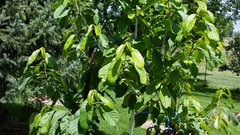
Kevin Olsen
6 years agoI'm addicted. I've turned a good portion of my back yard into a pawpaw patch. I will have about 20 trees by the time I'm done.
Kevin Olsen
6 years agoThanks, Tucsonken. How are pawpaws doing in your heat? Where I live in northern Utah it has been hot the last couple of days (around 100 degrees) but that's as warm as it ever gets.
tucsonken
6 years agoWe have had many days over 110 degrees recently, with a few days reaching 114 in my yard. The pawpaws show very little damage--just a few sunburned spots here and there. They are all grown from seeds planted directly in the ground, so the tap roots have been able to develop naturally. which has likely helped them deal with the heat.
JP
6 years agoHello, my first post on Gardenweb. On my property there are many wild apple trees, but a couple years ago I decided to plant an orchard of known cultivars. Then last year I got into rare and exotic fruits. One of which was the pawpaw. I planted about 30 small trees last year, and another 30 this year. Generally they are all doing well, I have only lost one tree, a Rappahannock. Fastest growers are the Pennsylvania Golden and the Overleese. One of my PAG's just passed 5 feet tall. I have found that you never want to take a Pawpaw that leafed out under low light conditions, and plant it in full sun. If the tree leafed out in full sun, then it can handle it. I water them quite a lot, which seems to make them grow faster, and resist large amounts of sunlight. Like Ken said, the taproot is very sensitive, but a good healthy taproot will make the tree much resistant to less than ideal conditions. When I dug the holes to plant the trees, I bored out a 3 foot by 4" diameter hole down the center and filled it with topsoil. This gives the taproot a big boost to grow deep. I mulch around the trees with grass clippings, and they seem to like this. Maybe next year I will get some fruit.
JP
6 years agolast modified: 6 years agoI am in Honesdale PA. Up in the hills north of town. About 1500 feet elevation. Listed as zone 5, but more like zone 6. The winters are long, but up in the hills the temps don't drop as low. Coldest I have ever seen is -12F, but other than that one time it has never gotten below -8F. Last winter it didn't go below zero. Three times I have seen a frost in June.
Kevin Olsen
6 years agoOur elevation in extreme Northern Utah, near Logan, is 4534 feet. The nights are quite cool in Summer. Winters are definitely long here. I have seen -45 temperatures about 20 years ago. I was surprised to see -32 this last January. I'm not sure paw paws would survive -45. But I have been able to get certain varieties of magnolias to thrive and bloom here, so it's not a total iceberg. :-)
JP
6 years agoSupposedly Pawpaws will not survive if the roots all freeze. I think that is why they dig their taproots up to 4' deep, and they like to grow along river banks, where the ground doesn't freeze much. I loaded them up with grass clippings during the fall to insulate the root system. We had a warm winter anyways, but they are growing better than any other species of fruit tree in my yard this year. Anyways, if you can keep the roots from freezing, they might make it, but it does sound a bit cold.
mackeah
5 years agoAnd we just moved to an area over 8,000 feet, Woodland Park, CO--has anyone tried growing them this high yet? I love the trees, first saw them and tasted the fruit in Ohio. I even have Paw Paw seed earrings! I may try growing from seed this winter, see how they grow.
nmfruit
5 years agoI would be surprised if they could thrive with the short growing season at that elevation in CO, but who knows? Pawpaw is still a tropical plant at heart, albeit one that has developed some impressive winter hardiness.
suzemsh
6 months agoThanks for all this info, even if it is quite a few years since anyone posted. After having a lot of success growing pawpaws in North Carolina we moved to Santa Fe NM a year and a half ago. Immediately ordered NC-1, Overlease, and Shennandoah. The Overlease didn't make the first winter but the other two are hanging on. It is high elevation and they're shaded most of the day and I do water them regularly. I'm really hoping the trees will last because this is the most wonderful fruit! Also got two growing from seeds my sister in Wisconsin sent from her trees.

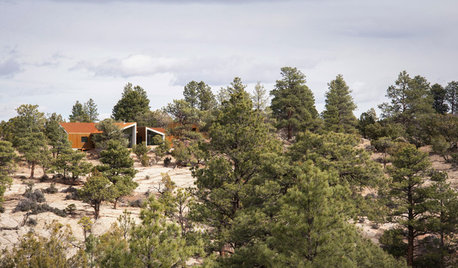
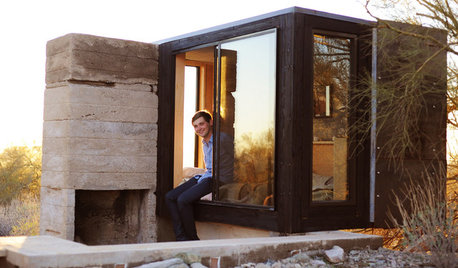
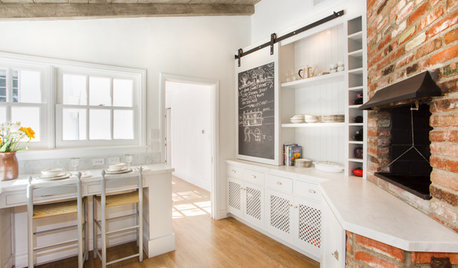
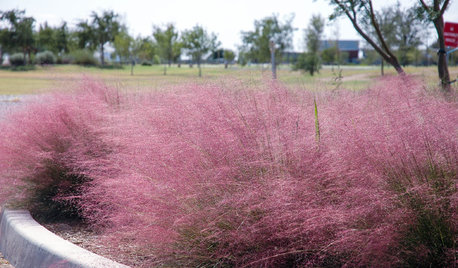
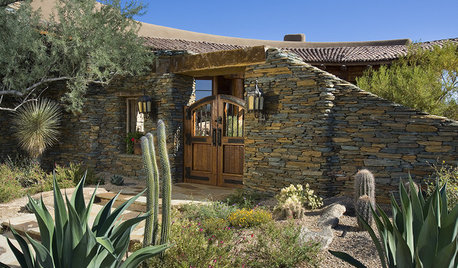
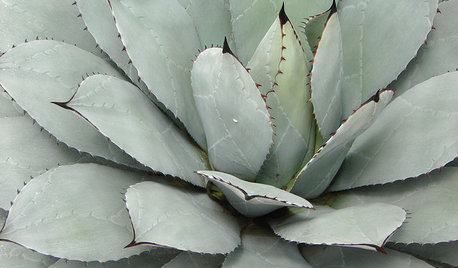
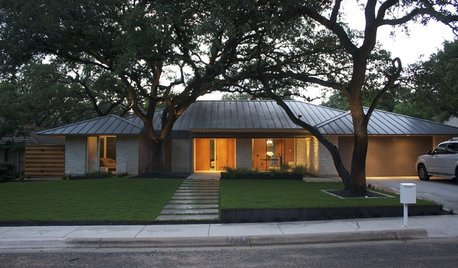
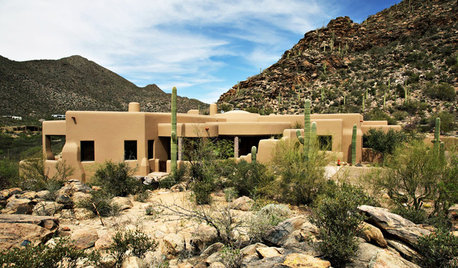











tucsonken